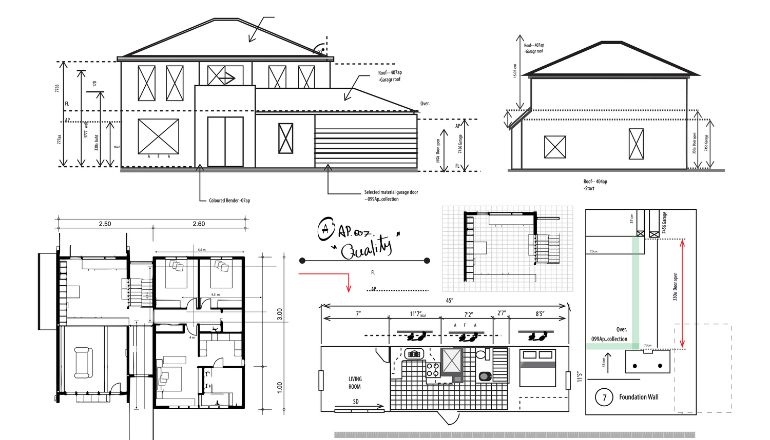How to Read a Condo Floor Plan and Make the Right Choice

When it comes to finding the perfect condo, knowing how to read a condo floor plan is essential. A floor plan is more than just a blueprint it’s your first glimpse into how the space will work for you. Whether you’re looking for open spaces or privacy, understanding the layout can help you make the best choice. Let’s dive into the key elements that will guide you in evaluating a condo’s design and functionality.
Understanding the Basics of a Condo Floor Plan
A condo floor plan is a blueprint that shows the layout of the unit, including the size and arrangement of rooms, walls, doors, and windows. It provides a clear view of how the space is structured and how the rooms are connected. Floor plans often display room dimensions, which help you understand the size of each space. They also indicate features such as bathrooms, kitchens, and living areas, and show the flow of natural light and ventilation. Understanding these basic elements will help you assess if the condo meets your needs.
Key Symbols and Labels in Condo Floor Plans
When reading a condo floor plan, it’s essential to understand the symbols and labels that provide key information. Here are the most common ones:
- Walls: Solid lines typically represent walls, while dashed lines may indicate non-load-bearing walls or partitions.
- Doors: Doors are usually shown as a break in a wall with a curved line indicating the door’s swing direction.
- Windows: Windows are represented by a thin line or a set of parallel lines within the walls.
- Room Labels: Each room is labeled to show its function (e.g., “Living Room,” “Bedroom,” “Kitchen”). This helps identify the purpose of each space.
- Dimensions: Measurements are often displayed next to rooms or walls, indicating the length and width of spaces.
- Appliances and Fixtures: Icons for appliances, such as refrigerators or ovens, and fixtures like sinks or bathtubs are often used to indicate their location.
- Stairs and Elevators: If applicable, stairs are shown with a series of lines or arrows, and elevators are marked with a square or rectangle.
- Balconies or Patios: Outdoor spaces like balconies are indicated with a line or shaded area outside the building’s main structure.
Understanding these symbols and labels makes it easier to interpret the floor plan and assess how well the space fits your preferences.
Reading Dimensions and Scale on a Condo Floor Plan
An important tip in learning how to read a condo floor plan is that Dimensions on the plan show the size of rooms and spaces, typically in feet or meters. These measurements are listed next to walls or room labels to give you an idea of the room’s actual size. To interpret the scale, look for a reference measurement, such as a scale bar or ratio (e.g., 1 inch = 10 feet). This helps you translate the drawing into real-world proportions. Keep in mind that while dimensions are important, the actual flow and usability of space should also be considered.
Interpreting the Layout: Open Concept vs. Traditional Floor Plans
When reading a condo floor plan, one of the key considerations is whether the layout is open concept or traditional.
- Open Concept: This layout features minimal walls between living areas, often combining the kitchen, dining, and living room into one large space. It promotes a more airy, spacious feel and is ideal for those who enjoy entertaining or prefer a less segmented environment.
- Traditional Floor Plan: In contrast, a traditional layout typically has more distinct, separated rooms for the kitchen, dining, living room, and sometimes even individual hallways for private spaces like bedrooms and bathrooms. This offers more privacy and a sense of separation between different areas of the condo.
Understanding the layout style is key when figuring out how to read a condo floor plan and determining which type of space will best suit your lifestyle.
Understanding Common Features in Condo Floor Plans
Condo floor plans often include specific features that are important for evaluating the space. Here are some common elements to look for:
- Balconies and Terraces: Outdoor spaces like balconies or patios are typically marked outside the main living area, providing extra space for relaxation or entertaining.
- Storage Areas: These are often designated spaces for closets, cabinets, or even extra rooms specifically for storage, which are essential for keeping your living areas organized.
- Bathrooms and Utility Spaces: The number and size of bathrooms, along with utility rooms for laundry or maintenance, are key features to assess for convenience and functionality.
- Shared Walls: Condo floor plans often highlight shared walls with neighboring units, important for understanding noise levels and privacy.
- Windows and Natural Light: The placement of windows affects natural light and ventilation, contributing to the overall ambiance and comfort of the condo.
How to Evaluate Condo Floor Plans for Your Needs
To determine if a condo floor plan suits your lifestyle, focus on these key factors:
- Space Flow: Ensure rooms are logically connected, with easy access between areas like the kitchen and living room.
- Room Sizes: Check that the dimensions are large enough for your furniture and lifestyle needs.
- Storage: Look for sufficient closet and storage space to accommodate your belongings.
- Natural Light: Evaluate window placements and the amount of natural light to ensure comfort.
- Flexibility: Consider whether the layout allows for future changes or adaptations.
By considering these elements, you can confidently assess whether a condo’s floor plan works for you.
Conclusion: Mastering Condo Floor Plans for Your Next Purchase
Understanding how to read a condo floor plan and evaluate it is essential when making a purchase. By familiarizing yourself with layout types, key symbols, and dimensions, you can assess whether a space meets your needs. Pay attention to flow, storage, natural light, and room sizes, and consider how flexible the space is for future changes. With this knowledge, you’ll be well-equipped to make an informed decision for your next condo purchase.
FAQs
How do I evaluate room sizes in a condo floor plan?
Check the dimensions on the plan and compare them to your current space to ensure they fit your needs.
What is the difference between open-concept and traditional layouts?
Open-concept layouts have fewer walls for a spacious feel, while traditional layouts offer more privacy with separate rooms.
How can I assess storage space in a condo?
Look for closets, cabinets, and additional storage areas to make sure there’s enough space for your belongings.














Great breakdown! Is there a standard size for condo bedrooms that buyers should look out for when comparing floor plans?
Worth noting,Toronto’s new condo developments are increasingly offering micro-units, making it even more important to carefully check floor plans before buying.
This is so helpful. I almost overlooked the lack of storage in a unit I was considering until I read the floor plan carefully, definitely a key takeaway here.